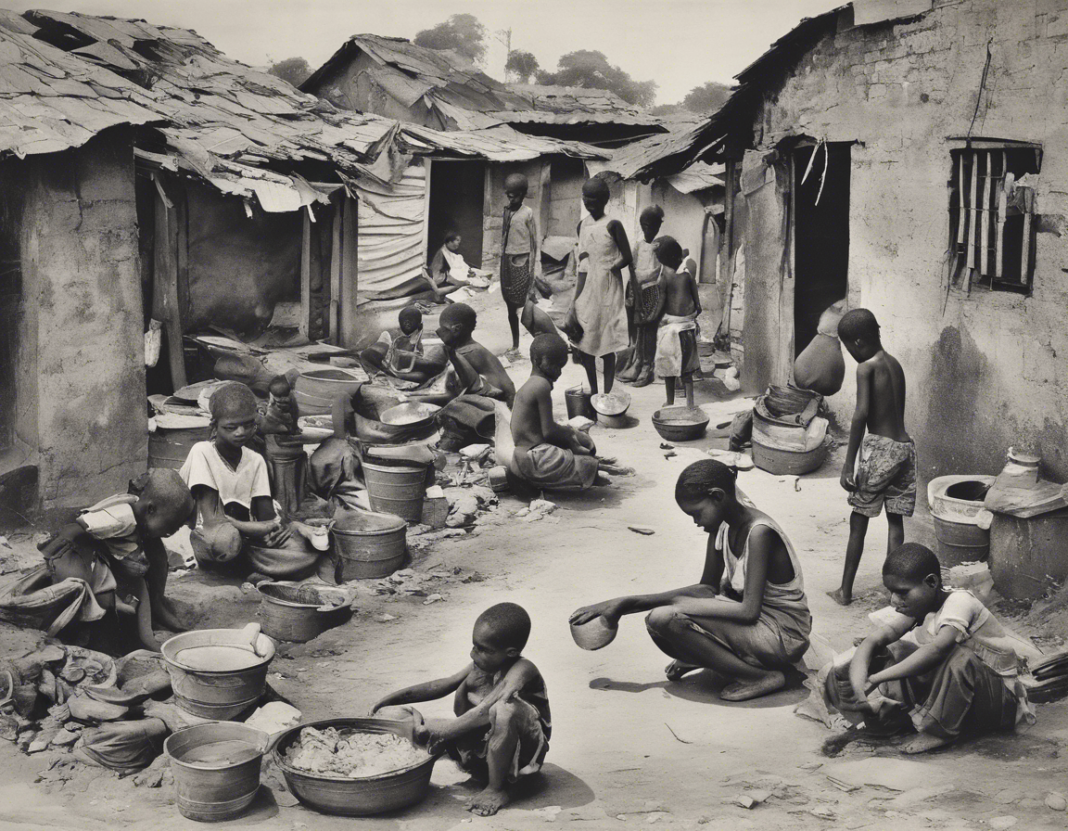Introduction
As students delve into the complexities of society and the issues around poverty in their class 9 curriculum, it is natural to have questions and seek more clarity on the subject. In this guide, we aim to provide a comprehensive overview of poverty to help students better understand its causes, effects, and potential solutions.
Understanding Poverty
Poverty is a multifaceted issue that affects individuals, families, communities, and entire nations. It is not simply a lack of financial resources, but a condition characterized by inadequate access to basic necessities such as food, shelter, healthcare, and education. In a society plagued by poverty, individuals often struggle to meet their daily needs, leading to a cycle of deprivation that can be difficult to break.
Causes of Poverty
Poverty has various root causes, including:
1. Lack of Education: Without access to quality education, individuals may struggle to secure stable employment and break out of the poverty cycle.
2. Unemployment: High levels of unemployment can leave many individuals and families without a reliable source of income, pushing them into poverty.
3. Income Inequality: Disparities in income distribution can leave marginalized communities at a disadvantage, perpetuating poverty across generations.
4. Health Issues: Poor health can limit individuals’ ability to work and earn a living, further exacerbating their financial struggles.
5. Political Factors: Corruption, inadequate governance, and lack of social welfare programs can also contribute to the prevalence of poverty in a society.
Effects of Poverty
The impact of poverty extends far beyond financial constraints. Some of the key effects of poverty include:
1. Malnutrition: Lack of access to nutritious food can lead to malnutrition and related health issues among impoverished populations.
2. Limited Access to Healthcare: Many individuals living in poverty struggle to afford healthcare services, leading to unaddressed medical needs and poor health outcomes.
3. Education Barriers: Children from impoverished backgrounds often face barriers to accessing quality education, limiting their opportunities for future success.
4. Social Exclusion: Poverty can lead to social exclusion and stigmatization, further isolating individuals and families from the broader community.
5. Psychological Impact: The stress and anxiety of living in poverty can take a toll on individuals’ mental well-being, leading to issues such as depression and low self-esteem.
Solutions to Poverty
Addressing poverty requires a multifaceted approach that tackles its root causes while providing support to those affected. Some effective solutions include:
1. Education Programs: Investing in education initiatives can empower individuals to break out of poverty by expanding their opportunities for employment and advancement.
2. Employment Support: Job training programs, vocational skills development, and support for small businesses can help create sustainable livelihoods for those living in poverty.
3. Healthcare Access: Improving access to healthcare services, especially for marginalized communities, can enhance health outcomes and reduce the financial burden of medical expenses.
4. Social Welfare Programs: Implementing social welfare programs such as food assistance, housing support, and financial aid can provide crucial safety nets for individuals and families facing poverty.
5. Policy Reforms: Enacting policies that promote income equality, combat corruption, and strengthen governance can create a more equitable society where poverty is less pervasive.
Frequently Asked Questions (FAQs) About Poverty
1. What is the poverty line?
The poverty line is the minimum level of income deemed necessary to afford basic necessities such as food, shelter, and clothing. It varies by country and is often used to determine eligibility for social welfare programs.
2. How many people live in poverty globally?
According to the World Bank, over 700 million people live in extreme poverty, defined as living on less than $1.90 per day. This represents a significant challenge for governments, NGOs, and international organizations working to eradicate poverty.
3. What are the different types of poverty?
There are various types of poverty, including absolute poverty (lack of basic necessities), relative poverty (income inequality within a society), rural poverty (predominantly affecting rural communities), and urban poverty (concentrated in urban areas).
4. How does poverty impact children?
Children living in poverty face numerous challenges, including limited access to education, healthcare, and nutritious food. Poverty can also impact children’s cognitive development, emotional well-being, and future opportunities.
5. What role can individuals play in combating poverty?
Individuals can make a difference in the fight against poverty by supporting local charities, volunteering their time and skills, advocating for policy changes, and raising awareness about the root causes and consequences of poverty.
6. Why is addressing poverty important for sustainable development?
Poverty alleviation is crucial for sustainable development as it helps create a more equitable society, fosters economic growth, promotes social cohesion, and contributes to overall prosperity and well-being for all members of a community.
7. How does climate change affect poverty levels?
Climate change can exacerbate poverty by disrupting agricultural production, increasing natural disasters, and compromising access to clean water and food security. Vulnerable communities are often hit hardest by the impacts of climate change.
8. What are some success stories in poverty alleviation?
There have been successful examples of poverty alleviation around the world, such as conditional cash transfer programs in Latin America, microfinance initiatives empowering entrepreneurs in developing countries, and education-focused interventions lifting communities out of poverty.
9. How can technology be leveraged to address poverty?
Technology has the potential to transform how we combat poverty, from mobile banking solutions providing financial access to digital platforms connecting farmers to markets. Innovations in healthcare, education, and disaster response can also help alleviate poverty.
10. What are the long-term effects of poverty on society?
The long-term effects of poverty on society include decreased productivity, increased healthcare costs, higher crime rates, intergenerational poverty cycles, and social unrest. Addressing poverty is essential for fostering a more just and equitable society.
In conclusion, poverty is a complex and pervasive issue that requires collective action and systemic change to address effectively. By understanding the root causes, effects, and potential solutions to poverty, students can develop a broader perspective on this critical societal challenge and contribute to building a more inclusive and equitable world.
